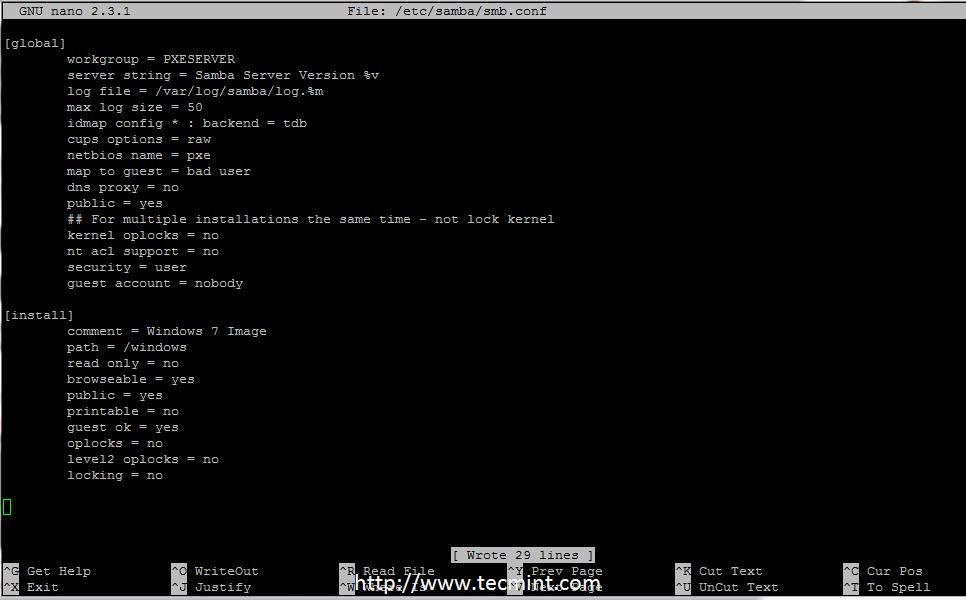Install Smb Server Windows 7


How to Install and Test SAMBA. A share or a meta-service on the Samba server. Samba database of a Windows registry skeleton that provides support. It allows us to share files, folders, and printers between Linux server and Windows clients. Now, install samba using the following command.
In our last article, we showed for basic file sharing between Ubuntu systems and Windows machines. Where we looked at configuring anonymous (unsecure) as well as secure file sharing. Ps3 emulator for pc full version.
Here, we will describe how to install and configure Samba4 on CentOS 7 (also works on RHEL 7) for basic file sharing between other Linux systems and Windows machines. Important: Starting from version 4.0, Samba can run as an. We suggest you read through our special series on setting up, which includes critical topics for Ubuntu, CentOS, and Windows.
Install Samba4 in CentOS 7 1. First install Samba4 and required packages from the default CentOS repositories using the as shown. # yum install samba samba-client samba-common. Verify Windows WorkGroup Configuring Samba4 on CentOS 7 4.
The main samba configuration file is /etc/samba/smb.conf, the original file comes with pre-configuration settings which explain various configuration directives to guide you. But, before configuring samba, I suggest you to take a backup of the default file like this. # cp /etc/samba/smb.conf /etc/samba/smb.conf.orig Then, proceed to configure samba for anonymous and secure file sharing services as explained below. Samba4 Anonymous File Sharing 5. First create the shared directory where the files will be stored on the server and set the appropriate permissions on the directory.
# mkdir -p /srv/samba/anonymous # chmod -R 0775 /srv/samba/anonymous # chown -R nobody:nobody /srv/samba/anonymous Also, you need to change the SELinux security context for the samba shared directory as follows. # chcon -t samba_share_t /srv/samba/anonymous. Verify Samba Current Configuration Settings Load smb config files from /etc/samba/smb.conf rlimit_max: increasing rlimit_max (1024) to minimum Windows limit (16384) Processing section '[homes]' Processing section '[printers]' Processing section '[print$]' Processing section '[Anonymous]' Loaded services file OK. Add Files to Samba Anonymous Share Setup Samba4 Secure File Sharing 11. First start by creating a samba system group, then add users to the group and set a password for each user like so.
# groupadd smbgrp # usermod tecmint -aG smbgrp # smbpasswd -a tecmint 12. Then create a secure directory where the shared files will be kept and set the appropriate permissions on the directory with SELinux security context for the samba.
# mkdir -p /srv/samba/secure # chmod -R 0770 /srv/samba/secure # chown -R root:smbgrp /srv/samba/secure # chcon -t samba_share_t /srv/samba/secure 13. Next open the configuration file for editing and modify/add the section below with the corresponding directives.
# vi /etc/samba/smb.conf. Verify Secure Configuration Settings Load smb config files from /etc/samba/smb.conf rlimit_max: increasing rlimit_max (1024) to minimum Windows limit (16384) Processing section '[homes]' Processing section '[printers]' Processing section '[print$]' Processing section '[Anonymous]' Loaded services file OK.
• • Hands-On Exercise 1: Installing & Configuring Samba • • Installing Samba 1. Use yum to install the Samba package: yum -y install samba Creating Samba Test Directory and Files For this part of the procedure, you'll use the su - (switch user) command to work as root. Although it’s not best practice to do this regularly, there are times where it's much more practical to work directly as root instead of trying to use sudo to do everything.
This is one of those times. You're going to create a new directory containing three empty files which you'll share using Samba.
While logged on as root, create the new directory /smbdemo with the following command: mkdir /smbdemo 3. Change the permissions on the new directory to 770 with the following command: chmod 770 /smbdemo 4.
Navigate to the new directory with the following command: cd /smbdemo 5. Add three empty files to the directory with the following command: touch file1 file2 file3 Figure 1: Using touch to create files for the Samba exercise. Adding the Samba User You must add users to the Samba database in order for them to have access to their home directory and other Samba shares. Use the following command to add a new Samba user (the new Samba user must be an existing Linux user or the command will fail): smbpasswd -a For example, to add the user don, use the command smbpasswd -a don. Creating the Samba Group 7. Perform the following steps to create a smbusers group, change ownership of the /smbdemo directory, and add a user to the smbusers group: groupadd smbusers chown:smbusers /smbdemo usermod -G smbusers don Figure 2: Adding the smbusers group, changing ownership on /smbdemo, and adding a user to the smbusers group.